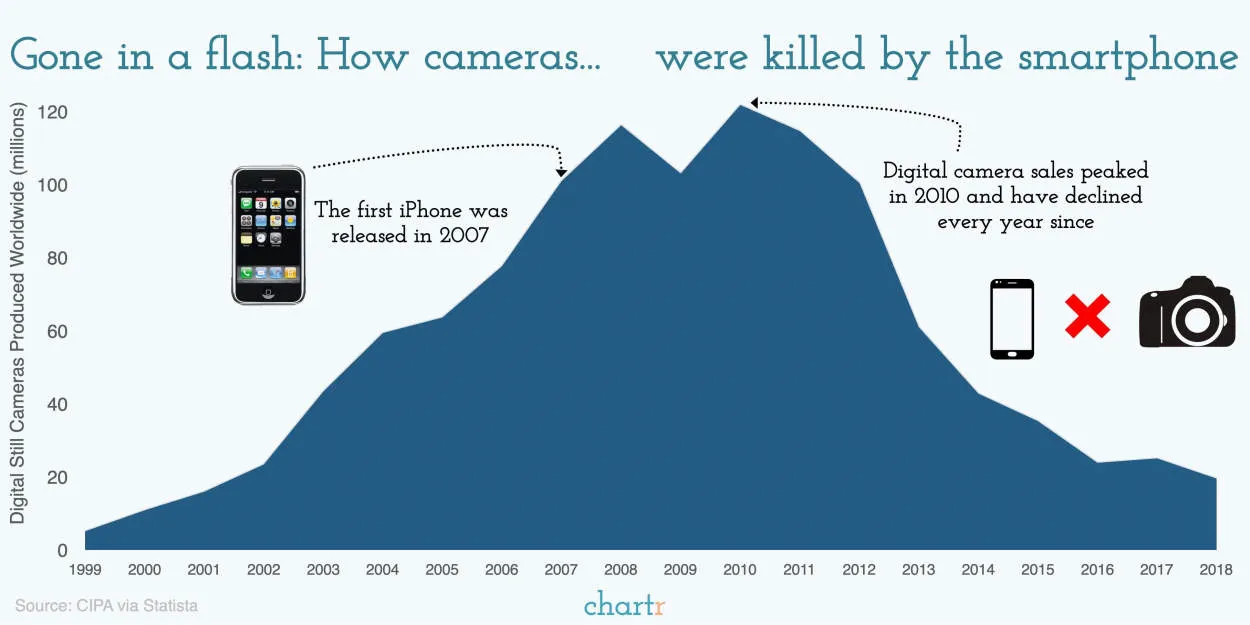The rapid advancement of smartphone cameras has had a profound impact on the US market. These pocket-sized devices have revolutionized the way we capture and share moments, catapulting photography into the mainstream. This article delves into the transformative effect smartphone cameras have had on consumer behavior and the photography industry as a whole.
The Rise of Smartphone Photography in the US
In recent years, the influence of smartphone cameras on the US market has been increasingly dominant. With advancements in technology, smartphone photography has transformed the way people capture and share moments.
One key factor driving this rise is the convenience and accessibility of smartphone cameras. Almost everyone carries a smartphone, making it easy for individuals to capture and instantly share photos with family, friends, and followers. The rise of social media platforms like Instagram and Facebook has further fueled this trend, with users constantly seeking to curate and share visual content.
Smartphone cameras have also become increasingly advanced, rivaling the capabilities of traditional standalone cameras. Manufacturers have been focusing on improving camera quality, developing features like dual lenses, optical image stabilization, and advanced low-light performance. These enhancements have allowed everyday users to capture professional-looking photos without the need for expensive equipment.
The rise of smartphone photography has not only impacted individuals but also businesses. Many companies now rely on user-generated content for marketing purposes. With the prevalence of easily shareable and high-quality smartphone photos, businesses can engage with their audience in a more authentic and relatable way.
Additionally, the popularity of smartphone photography has given rise to a community of photo enthusiasts. Online platforms and apps dedicated to smartphone photography have emerged, where photographers can showcase their work, exchange tips and techniques, and participate in challenges and competitions.
In conclusion, the rise of smartphone photography in the US has reshaped the way people capture and share moments. The convenience, accessibility, and continuous improvements in smartphone camera technology have made it a dominant force in the market. This trend has not only impacted individuals on a personal level but also revolutionized the way businesses engage with their audience.
How Smartphone Cameras Are Changing the Photography Industry
The rapid advancement of smartphone cameras has significantly impacted the photography industry, especially in the US market. With their ever-improving quality and convenience, smartphone cameras have become a game-changer for both professional photographers and casual enthusiasts alike.
First and foremost, smartphone cameras have made photography more accessible to the masses. Previously, to pursue photography seriously, one needed to invest in expensive DSLR cameras and various lenses. However, smartphones have eliminated this barrier, allowing anyone with a phone to capture high-quality photos without the need for additional equipment.
Furthermore, smartphone cameras have revolutionized the way photos are shared and consumed. Social media platforms like Instagram and Facebook have become a hub for visual storytelling, with millions of users regularly sharing their smartphone-captured photos with the world. This has led to a surge in demand for visually appealing content, turning photography into a popular and lucrative profession for many.
The rapid evolution of smartphone camera technology has also reshaped the photography market. Traditional camera manufacturers have had to adapt to this new reality by incorporating smartphone-like features into their own products. Additionally, smartphone companies have collaborated with renowned camera brands, bridging the gap between the two industries and driving innovation on both fronts.
It is worth noting that while smartphone cameras offer unparalleled convenience and accessibility, they still have their limitations compared to professional cameras. Factors such as limited optical zoom, smaller sensors, and less control over settings can hinder certain types of photography. Nonetheless, smartphone cameras continue to push boundaries and improve with each new release.
In conclusion, the advent of smartphone cameras has had a profound impact on the photography industry in the US market. Their accessibility, ease of use, and ability to capture stunning images have democratized photography and transformed it into an integral part of everyday life. As technology continues to advance, it will be fascinating to witness how smartphone cameras continue to shape the future of photography.
Advancements in Smartphone Camera Technology
In recent years, there have been significant advancements in smartphone camera technology, revolutionizing the way people capture and share moments. These advancements have had a profound impact on the US market, changing the way consumers engage with photography and influencing the purchasing decisions of smartphone users.
One of the key advancements is the introduction of multiple camera lenses on smartphones. Dual, triple, and even quad camera setups have become common features on flagship phones. This allows users to capture photos from different perspectives, zoom in without losing quality, and experiment with various effects.
Another significant development is the improvement in low-light photography. Smartphone cameras can now capture clearer and brighter images in challenging lighting conditions. This is made possible by larger pixel sizes, advanced image processing algorithms, and the integration of Night Mode features.
The integration of artificial intelligence (AI) has also enhanced smartphone camera capabilities. AI-powered features such as scene recognition, portrait mode, and automated adjustments have made it easier for users to take professional-looking photos with minimal effort.
Furthermore, the rise of computational photography has transformed smartphone cameras into powerful image processing tools. The ability to merge multiple frames, create depth-of-field effects, and apply real-time filters has opened up new creative possibilities for smartphone photographers.
Additionally, smartphone cameras have become essential tools for content creation and social media sharing. With the increasing popularity of platforms like Instagram and TikTok, users prioritize smartphones with high-quality cameras for capturing and sharing their daily lives.
The advancements in smartphone camera technology have resulted in a highly competitive market. Smartphone manufacturers continue to push boundaries by incorporating cutting-edge features and collaborating with professional photographers to further enhance the camera capabilities of their devices.
Challenges Faced by Traditional Camera Manufacturers
In recent years, the rise of smartphone cameras has had a significant impact on the US camera market. Traditional camera manufacturers are now facing a range of challenges as consumers increasingly turn to their smartphones for photography.
One of the main challenges faced by traditional camera manufacturers is the convenience and portability of smartphone cameras. Unlike bulky cameras, smartphones can be easily carried in pockets or bags, enabling users to capture moments spontaneously. Additionally, the integration of high-quality cameras into smartphones allows users to have a single device that combines multiple functionalities.
Another challenge is the continuous improvement of smartphone camera technology. Smartphone manufacturers invest heavily in research and development to enhance the capabilities of their cameras. They constantly introduce new features such as image stabilization, portrait mode, and low-light photography, which compete with the functionalities of traditional cameras.
Furthermore, the availability of photo editing apps and social media platforms has contributed to the declining demand for traditional cameras. Smartphone users can now edit and share their photos instantly, eliminating the need for additional equipment and editing software.
Despite these challenges, traditional camera manufacturers are adapting to the market changes. They are focusing on niche markets such as professional photography, where the superior image quality and advanced features of traditional cameras still have an edge over smartphones. Additionally, some manufacturers are integrating wireless connectivity and other smartphone-like features into their cameras to offer a more versatile shooting experience.
In conclusion, the rise of smartphone cameras has posed significant challenges for traditional camera manufacturers. However, with innovation and targeting specific market segments, traditional cameras continue to play a vital role in photography, coexisting with the rapidly advancing smartphone camera technology.
Conclusion
The rise of smartphone cameras has revolutionized the US market, transforming the way we capture and share moments. With the advancement in technology, smartphone cameras have become a primary consideration for consumers when purchasing a new device. Their convenience, portability, and high-quality images have disrupted the traditional camera market. As smartphone cameras continue to improve, they are likely to have an even greater impact on the US market, making photography more accessible and integrated into our everyday lives.




